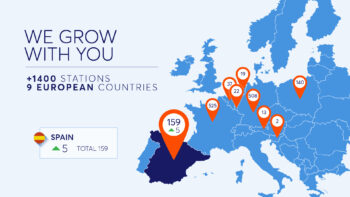The Eurovignette is a toll system for heavy goods vehicles and it gets its name from the sticker that is attached to the windshield. With its latest reform, the idea is to gradually replace the tariff calculated based on driving time with other factors that better reflect the vehicle’s ecological footprint, such as distance or CO2 emissions.
This system affects larger trucks, weighing more than 12 tonnes, although it has not been made final and could include others that weigh less. In fact, there is already a debate happening as to whether it should be applied to vans and minibuses starting in 2026, “when it is technically feasible”, according to the Council of the EU.
Initially, the Eurovignette was implemented for environmental reasons and with the aim of being able to front the costs derived from the use of infrastructures, as stated by the National Federation of Transport Associations of Spain (FENADISMER). Therefore, the tariffs applied to each vehicle will depend on its level of emissions and the corresponding number of axles, thus completely doing away with the number of hours on the road.
At the end of 2021, professional drivers demanded radical and urgent changes, such as measures to mitigate the incessant rise in fuel prices, the installation of more and better rest areas for drivers and the “non-implementation of the Eurovignette”, a tariff unknown to those outside this sector. The truth is that the implementation of this toll can lead to an increase in the cost of Spanish exports to Europe and in the cost of the products that Spain buys from other countries. In the words of the Spanish Confederation of Freight Transport (CETM), “every kilometre travelled by truckers will make products more expensive and less competitive.”
This measure is not mandatory for all the member countries of the European Union, as long as they notify the European Commission in advance under the proven argument that its application would lead to a diversion of traffic that would have unintended negative consequences. To date, only four of the 27 have implemented this directive: Denmark, the Netherlands, Belgium and Luxembourg.
In the coming months, it is expected that this measure will come into force in more countries, so transport companies and professional carriers must keep an eye on the developments that are taking place regarding the Eurovignette.
14 October, 2022 | For andamur






